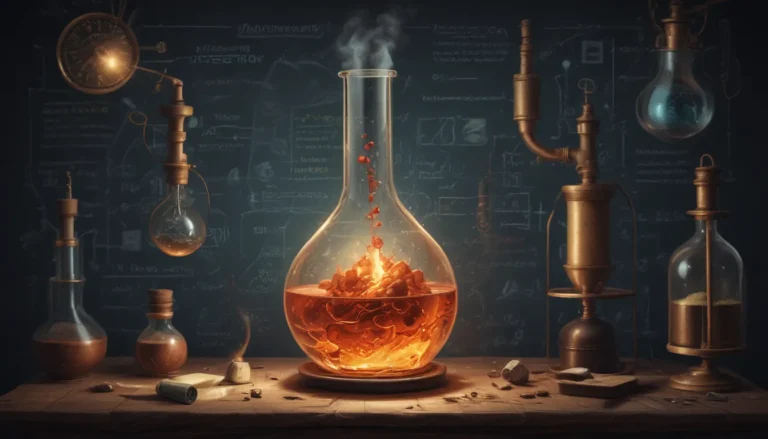A Note About Images: The images used in our articles are for illustration purposes only and may not exactly match the content. They are meant to engage readers, but the text should be relied upon for accurate information.
Welcome to the fascinating realm of line defects, also known as dislocations, where the intricate world of chemistry unfolds before your eyes. These imperfections within crystalline structures have captivated scientists for generations, leading to groundbreaking discoveries and advancements across various fields. Join us on a journey as we uncover 14 extraordinary facts about line defects that will leave you in awe of the complexities of chemistry and materials science.
Understanding Line Defects
Line defects, or dislocations, are structural imperfections within crystal lattices that disrupt the regular arrangement of atoms or ions. These imperfections can significantly impact the physical and chemical properties of materials, making them a subject of immense interest in materials science.
The Many Faces of Line Defects
Line defects can manifest in various forms, including edge dislocations, screw dislocations, mixed dislocations, and grain boundaries. Each type of dislocation possesses unique characteristics that can influence the mechanical, electrical, and optical properties of materials in distinct ways.
Influencing Crystal Growth
Line defects can influence the growth of crystals by acting as nucleation sites that alter the arrangement of atoms or ions during the crystallization process. This can lead to the formation of defects within the crystal lattice, ultimately impacting the overall structure and properties of the material.
Enhancing Mechanical Properties
Interestingly, line defects can strengthen materials by impeding the movement of dislocation lines, making them more resistant to deformation. This enhancement in mechanical strength is crucial for industries such as aerospace and automotive, where durable materials are essential.
Illuminating Optical Properties
Line defects can alter the optical properties of materials by affecting the transmission, reflection, absorption, scattering, and refraction of light. Understanding and controlling these effects are vital in fields like optics, photonics, and optoelectronics.
Facilitating Diffusion
Line defects can serve as pathways for the diffusion of atoms or ions through crystal lattices, a phenomenon known as pipe diffusion. This can have significant implications for the diffusion of impurities or dopants in materials, ultimately impacting their chemical composition and properties.
Shaping Material Strength
The presence of line defects can influence the overall strength of materials by acting as stress concentrators. Controlling the density and distribution of line defects is essential for optimizing the strength and integrity of materials in various applications.
Enabling Plastic Deformation
Line defects play a crucial role in plastic deformation, allowing materials to undergo permanent shape changes under stress without significant structural damage. This ability for dislocation motion enables the rearrangement of atoms or ions within materials.
Responding to External Stress
Line defects can form or multiply in response to external stress on a material, leading to the creation of new line defects or the multiplication of existing ones. This phenomenon, known as dislocation creep, is fundamental in understanding material behavior under stress.
Embracing Line Defect Diversity
While line defects can occur in a wide range of materials, certain materials are more prone to their formation due to factors such as high atomic mobility. Understanding the elements that influence the formation of line defects is essential for materials design and engineering.
Observing and Analyzing Line Defects
Line defects can be observed and characterized using various techniques such as electron microscopy, X-ray diffraction, and scanning probe microscopy. These methods offer valuable insights into the structure and behavior of materials at the atomic level.
Harnessing Line Defect Engineering
Understanding the formation and behavior of line defects allows scientists and engineers to control and engineer material properties. By manipulating the density, distribution, and types of line defects, materials can be tailored to meet specific requirements for diverse applications.
Pioneering Future Research
Ongoing research in the field of line defects continues to explore their influence on materials and seeks innovative ways to manipulate and leverage them for advanced material design and technology. The potential for groundbreaking discoveries and applications in this realm remains vast and promising.
The Unending Exploration of Line Defects
In conclusion, line defects are a captivating aspect of chemistry that holds immense significance across numerous industries and scientific disciplines. The field of materials science is enriched by the study of line defects, offering endless opportunities for advancements in technology and knowledge.
Unveiling the Mysteries of Line Defects
Dive deeper into the captivating world of line defects and witness the wonders of crystallography, the complexities of dislocations, and the intriguing traits of solid-state physics. Whether you’re a curious student, a seasoned researcher, or simply a science enthusiast, there’s always more to explore and discover in this ever-evolving field.
FAQs: Exploring Line Defects
-
What are line defects in chemistry?
Line defects, also known as dislocations, are disruptions in the regular atomic arrangement within crystal lattice structures, resulting in linear imperfections. -
How do line defects impact material properties?
Line defects play a crucial role in determining the mechanical, electrical, and optical properties of materials, influencing factors such as strength, conductivity, and transparency. -
Can line defects be deliberately created?
Yes, line defects can be intentionally introduced through techniques such as deformation, annealing, or impurity introduction to engineer materials with specific properties. -
How are line defects studied?
Line defects are often studied using techniques like X-ray diffraction, transmission electron microscopy, and scanning probe microscopy to visualize and characterize their structure at atomic and subatomic levels. -
What are the practical applications of line defect research?
Line defect research has practical applications in industries such as electronics, energy storage, catalysis, and material design, leading to stronger materials and improved technologies. -
Are all line defects detrimental?
No, line defects can have both positive and negative impacts on material properties, contributing to desired characteristics and functionalities in specific applications.
Embark on a journey through the mesmerizing world of line defects, where the blend of science and innovation holds endless possibilities for discovery and progress. Join us as we unravel the mysteries and marvels of line defects, shaping the future of technology and materials science.






